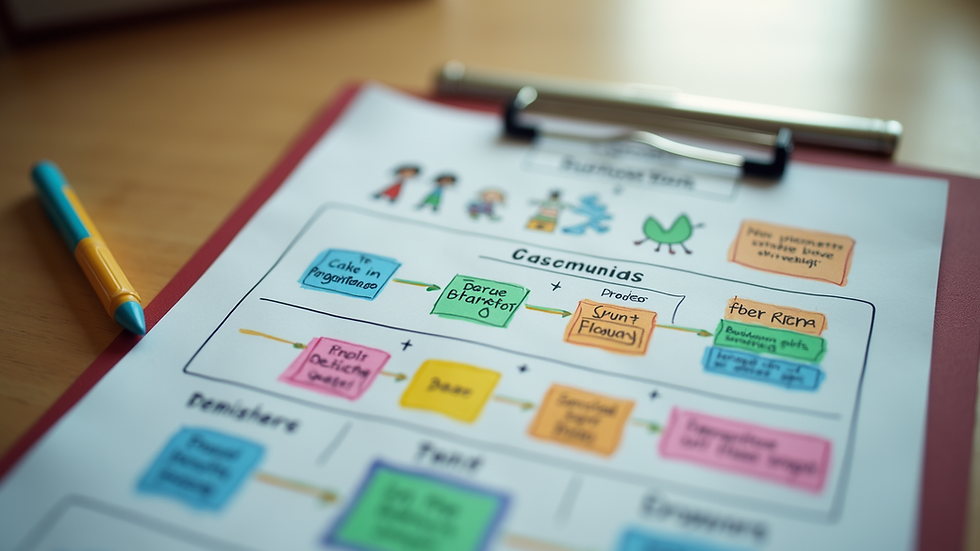Tantrum vs Sensory Meltdown
- Sarah Eis
- May 16
- 3 min read
As parents, we often find ourselves facing situations where our children become overwhelmed, leading to emotional outbursts. It's important for us to understand that not all emotional episodes are created equal. In this blog post, we will explore the key differences between a child's tantrum and a meltdown caused by overstimulation. By gaining insight into these distinctions, we can respond to our children's needs with empathy and support, fostering a harmonious and nurturing environment for their emotional growth.

Tantrums: Emotional Expression or Manipulation?
A tantrum is a common occurrence in the life of a child, particularly during the toddler and early childhood years. Tantrums usually arise from a child's frustration, anger, or inability to communicate effectively. Here are some key characteristics of a tantrum:
Purposeful behavior: Tantrums are often seen as an intentional act of expressing displeasure or attempting to manipulate a situation to their advantage. Children may throw themselves on the floor, scream, cry, or hit objects as a way to gain attention or seek a desired outcome.
Triggers and triggers: Tantrums are often triggered by specific events such as being denied a treat, being asked to do something they don't want to do, or being unable to have their way. They tend to dissipate once the child's needs or desires are acknowledged or met.
Control and self-awareness: During a tantrum, a child generally maintains a level of self-awareness and is conscious of their actions. They may even pause briefly to check for reactions or responses from caregivers.
Meltdowns: The Overwhelm of Overstimulation
Meltdowns, on the other hand, are distinct from tantrums and can be attributed to overstimulation or sensory overload. These episodes are typically experienced by children who are more sensitive to their environment or have conditions such as autism spectrum disorder or sensory processing disorder. Let's delve into the characteristics of a meltdown:
Overwhelm and loss of control: Unlike tantrums, meltdowns occur when a child becomes overwhelmed by sensory stimuli or emotional triggers. They often lose control of their emotions and actions, resulting in intense and uncontrolled outbursts. This loss of control is due to an inability to process and cope with the overwhelming input.
Unpredictability: Meltdowns can occur without apparent triggers or may be triggered by seemingly minor stimuli that wouldn't typically bother others. The triggers can vary from loud noises, bright lights, crowds, changes in routine, or even transitions between activities.
Sensory sensitivity: Children experiencing a meltdown may display heightened sensitivity to sensory stimuli, such as touch, sound, taste, or smell. Overstimulation of these senses can lead to an overwhelming response, as their nervous systems struggle to filter and process the information.
Supporting Your Child Through Meltdowns and Tantrums:
Recognize the signs: Understanding the differences between tantrums and meltdowns is crucial for effective support. Recognize the signs of overwhelm in your child, such as withdrawal, irritability, agitation, or a need for sensory regulation.
Create a calm environment: When you notice signs of overstimulation, help your child find a calm and quiet space to regulate their emotions. This might involve reducing sensory input by dimming lights, minimizing noise, or providing a soothing object, such as a weighted blanket.
Develop a communication strategy: Encourage your child to communicate their feelings by using visual aids, social stories, or alternative communication methods like picture cards or sign language. This can help them express their needs and emotions more effectively, reducing the frustration that often leads to meltdowns.
Practice empathy and patience: Whether your child is experiencing a tantrum or a meltdown, respond with empathy and patience. Avoid judgment or punitive measures, as this may escalate the situation further. Instead, provide reassurance, understanding, and unconditional support.
Seek professional help if necessary: If you suspect that your child's meltdowns are more than just overstimulation and are impacting their daily life, consider seeking guidance from a pediatrician, child psychologist, or a specialist in sensory processing disorders. They can provide a proper evaluation and recommend appropriate interventions or therapies.
Conclusion:
Understanding the differences between a child's tantrum and a meltdown caused by overstimulation is vital for parents to respond effectively and compassionately. While tantrums are typically purposeful expressions of emotions or attempts at manipulation, meltdowns are a response to overwhelming sensory stimuli and a loss of control. By providing a supportive and understanding environment, we can help our children navigate these challenging moments, allowing them to grow emotionally and develop healthy coping mechanisms. If you need support, our Board Certified Behavior Analysts at Exceptional Child 360, LLC can help you understand your child's behaviors and develop a comprehensive plan for you to implement across settings.




Comments